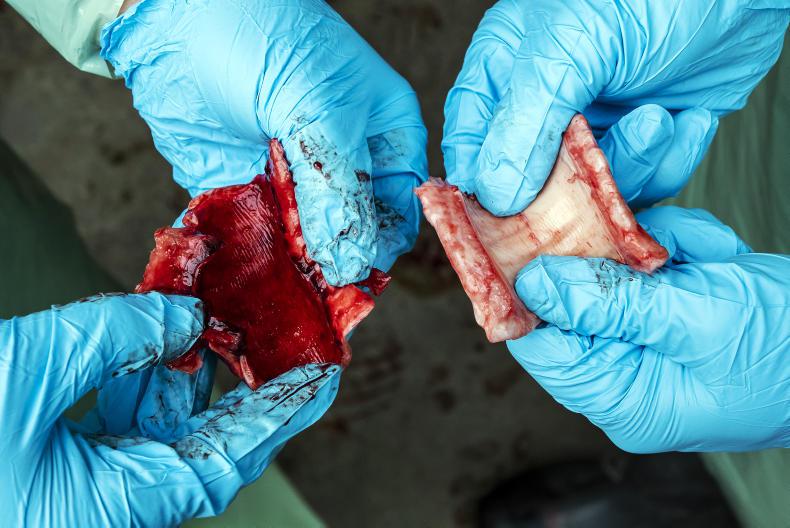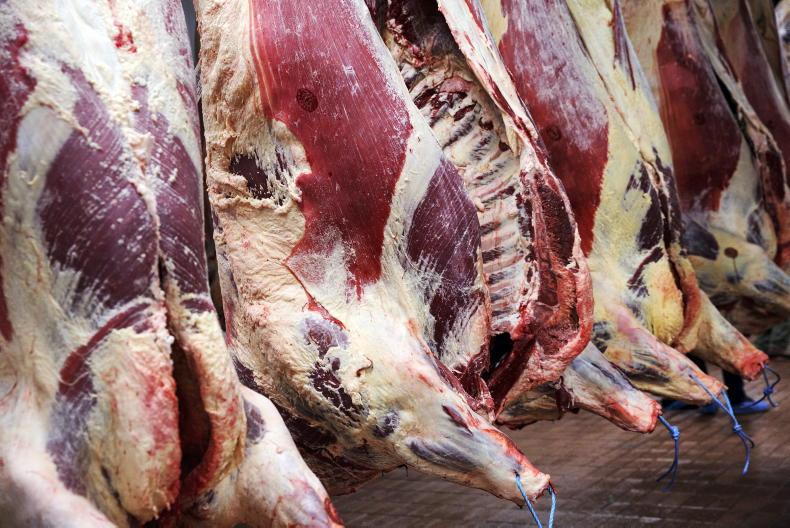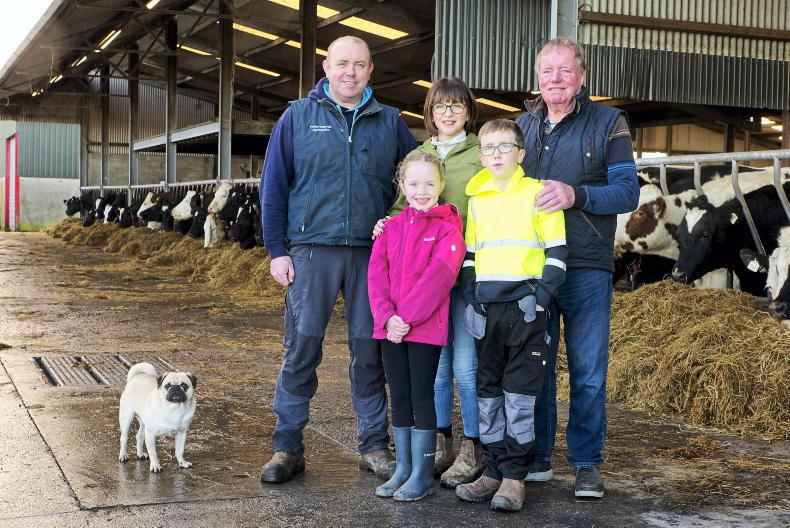The last few weeks have seen several reported cases of coughing cattle and lots of talk about lungworm. However, not every cough is lungworm, with bacterial pneumonias being reported on a number of Irish farms.
The challenge for farmers is that a lot of these bacteria are already present in healthy animals, but can be triggered by stress or compounding viral infections.
Any farmers with coughing animals that have been dosed, and therefore don’t have resistance issues, should consider bacterial pneumonias as a cause.
The three most prevalent bacterial infections are mannhaemia, histophillus and mycoplasma, with mannhaemia (formerly pasteurella) the most common of the three.
I have also noticed an increase in farmers who find pneumonias are harder to treat in store cattle that have been bought in
However, we are seeing more of mycoplasma, as it is showing up on an increasing number of farms. The question is, how significant is this bacterial infection on Irish farms?
I have also noticed an increase in farmers who find pneumonias are harder to treat in store cattle that have been bought in. Mycoplasma is a very difficult bug to treat, meaning that prevention and reducing the risk are key.
We must now proactively aim to investigate these cases and start thinking about prevention more and more.
Mycoplasma bovis: the facts
Mycoplasma is a small bacteria without a cell wall, which makes all the difference when we try to treat it. Not having a cell wall means a lot of antibiotics won’t work to kill it.
They are good at dodging cattle’s immune systems by developing a slimy biofilm which it can survive in tough conditions.
It can be hard to culture, with bloods now the best way to detect the bacteria. We can also check for mycoplasma in joint fluid and milk.
Youngstock screens in animals between nine and twelves months are another way to check for its presence.
It often isn’t the sole cause of pneumonia on its own, but definitely acts with other bugs to cause it.
It can cause chronic pneumonia and middle ear disease in young calves, which can reoccur quite frequently and cause a poor response to treatments.
It can get into the calves’ tonsils, which is how middle ear disease occurs
It can also cause mastitis and severe lameness in cows. Both the mastitis and the lameness can be quite difficult to treat.
The bug is usually contracted by calves through the milk of infected cows and then spread through nasal discharges to other calves.
It can get into the calves’ tonsils, which is how middle ear disease occurs. Mycoplasma can survive in the environment if conditions are favourable.
There is no licensed vaccine available, but farmers can get an autogenous vaccine made from cultures.
However, this can take time and limited evidence is available to show how effective it is.
Is mycoplasma in my herd?
If your animals are experiencing any of the symptoms described, then mycoplasma has to be considered as a potential cause.
Milk or blood samples can be taken to get a proper diagnosis, as can joint samples from cattle with lameness and joint swelling.
Treating mycoplasma can be difficult as only a select few antibiotics are effective against it.
Farmers need to work with their vets to find which medicines are the most suitable for treating mycoplasma.
Focusing on good colostrum management, hygiene, plenty of space and getting ventilation right with calves are key
Vaccination against other bacterial and viral causes of pneumonia can help.
Focusing on good colostrum management, hygiene, plenty of space and getting ventilation right with calves are key.
With waste milk being a huge risk for both antibiotic resistance and exposure to mycoplasma from mastitis, farmers must really ask themselves if they are doing any good by feeding waste milk to calves. Long term waste milk could be destroying the future health of your herd.
If farms aren’t showing any of the clinical signs described, then mycoplasma must still be considered. For coughing animals, work with your vet to make a diagnosis and control plan. With pneumonia a big risk as housing time approaches, a good farm vaccination strategy is an insurance policy worth investing in.
Post mortems
No farmer wants to lose animals, but fallen or dead animals can also provide valuable information to prevent further losses.
At a recent workshop attended by vets, I was shown how to perform a full post mortem and take proper samples for testing.
These techniques, applied by your vet, can provide farmers with a diagnosis and guide a farm’s decision around treatments, vaccination and control programmes.









SHARING OPTIONS